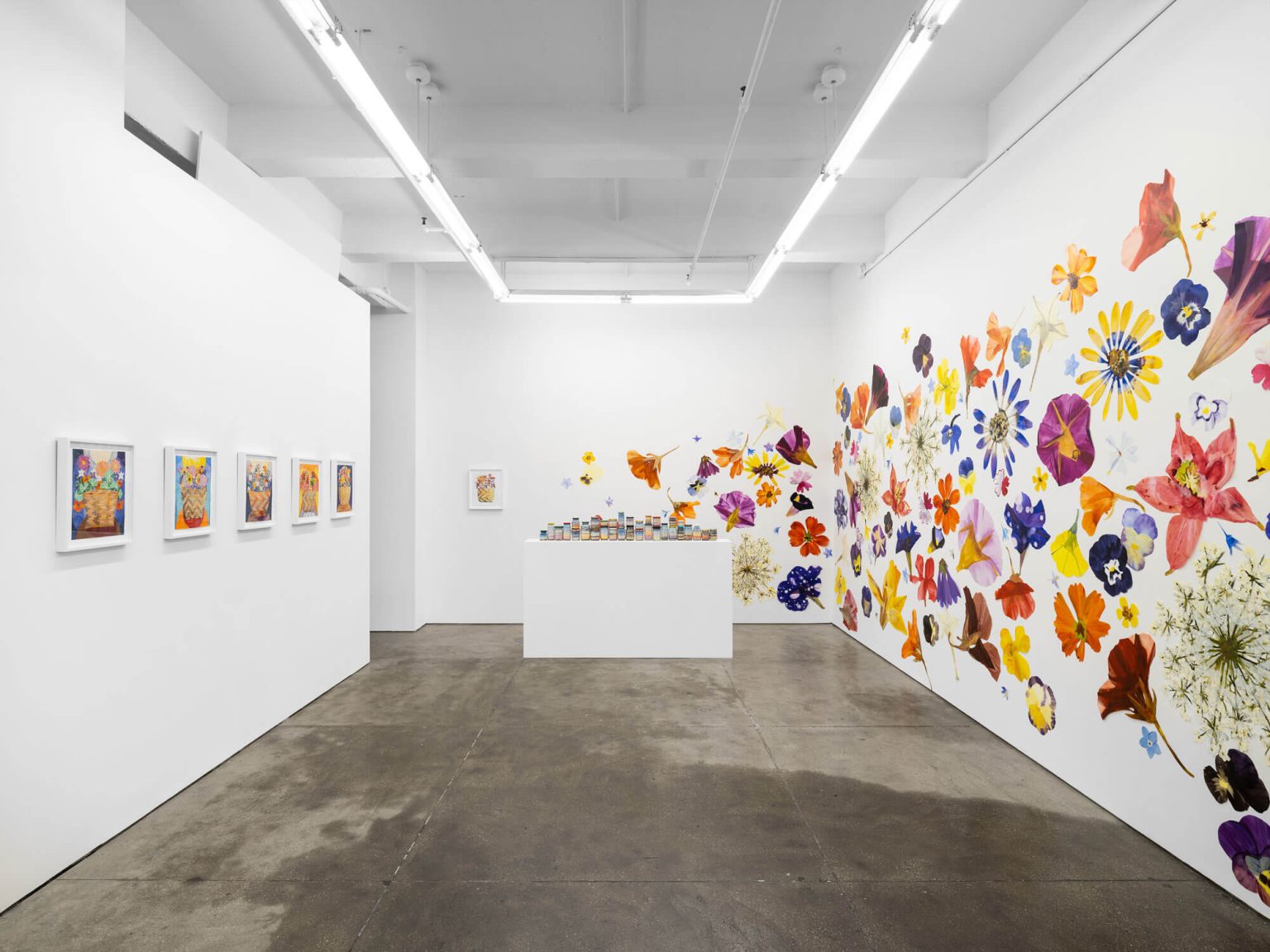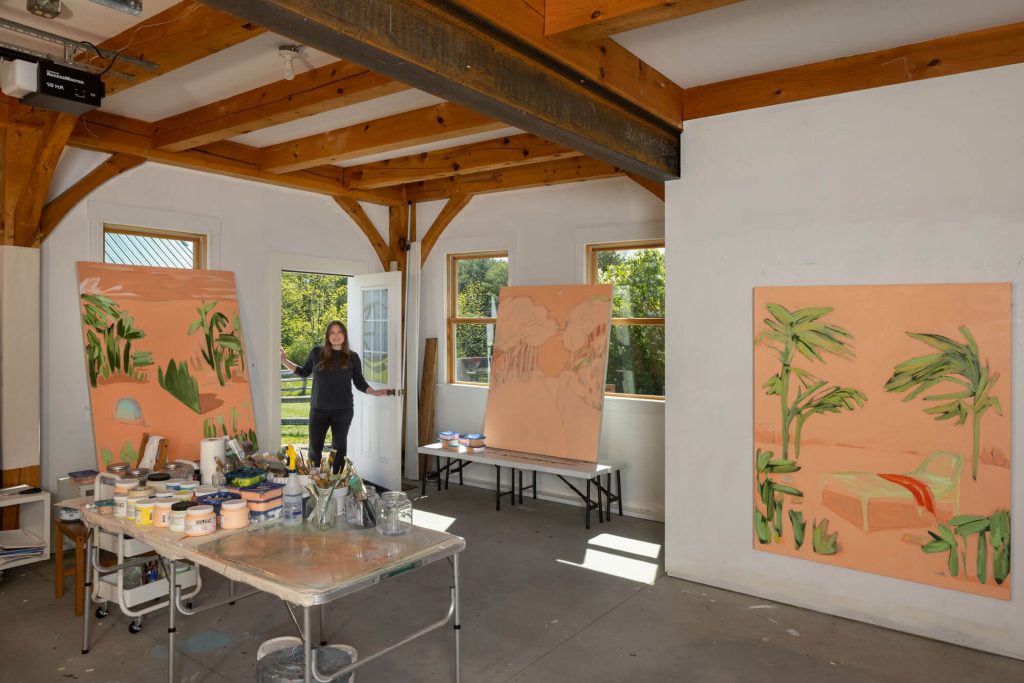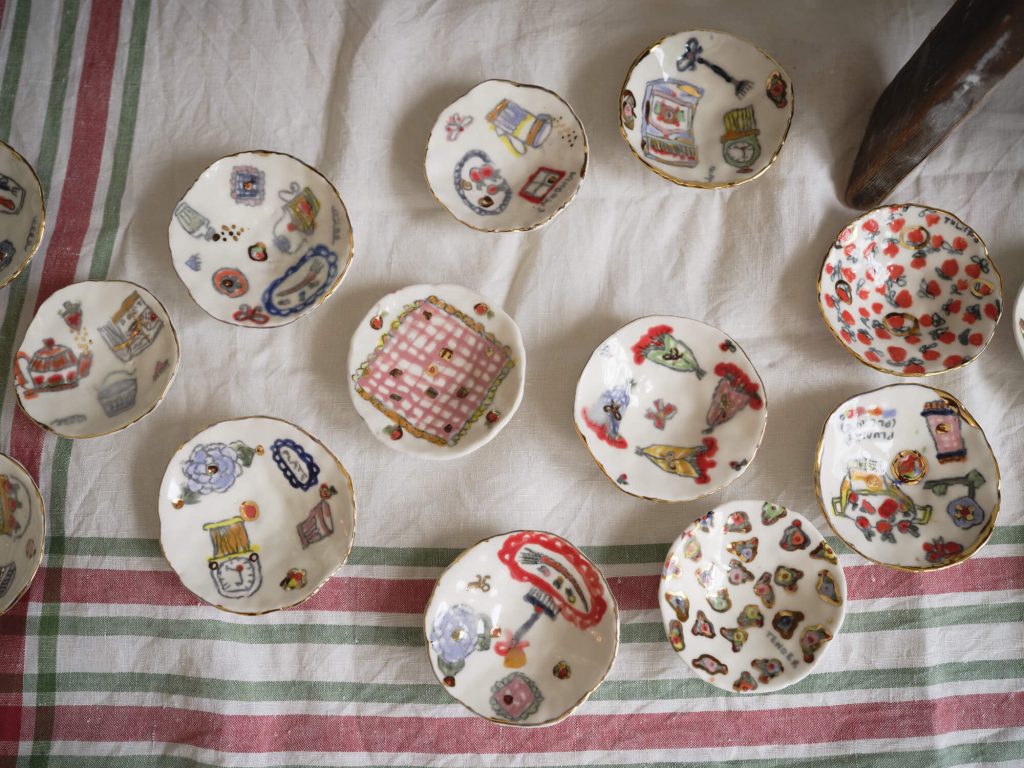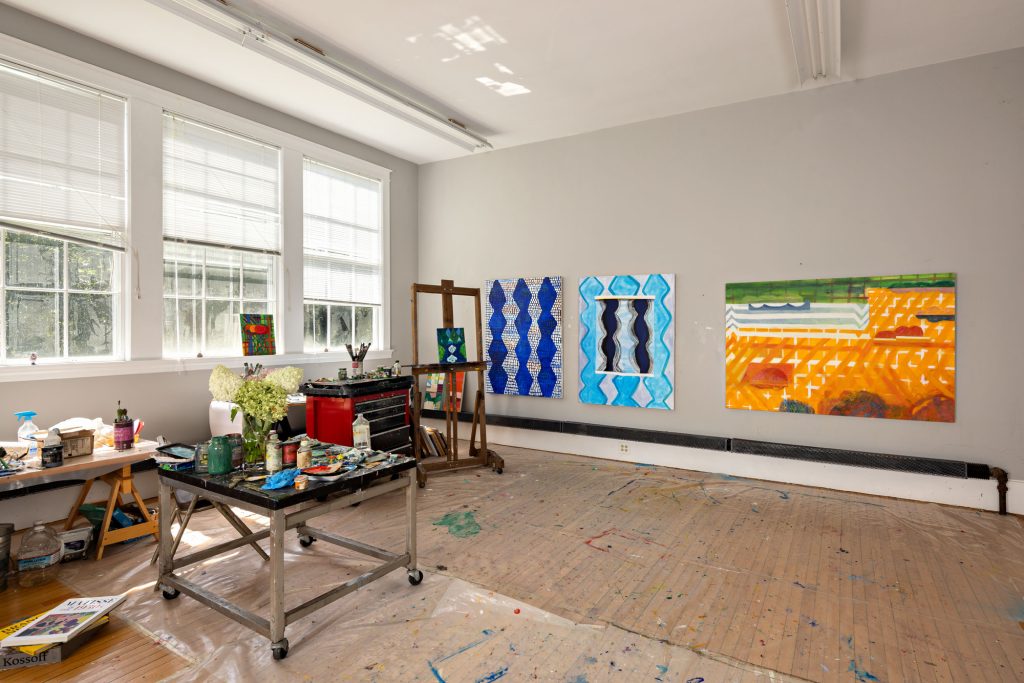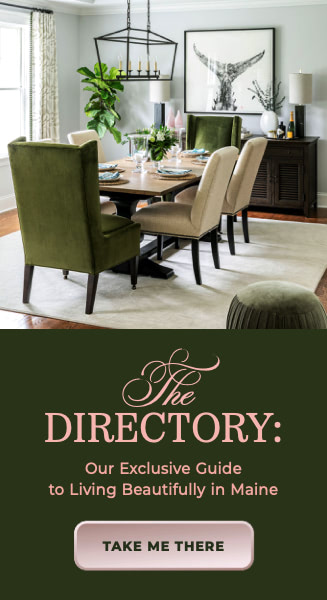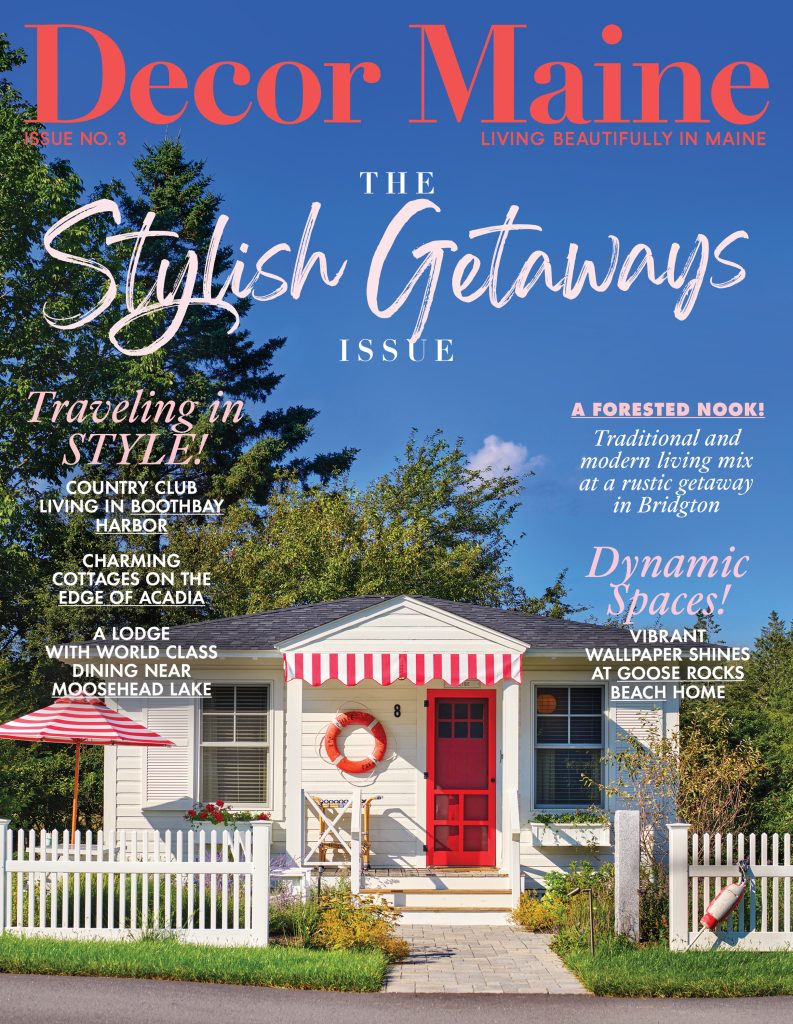Above: Installation view of Carly Glovinski: Timekeepers and Field Guides at Morgan Lehman Gallery, New York, NY, January 2023. Photo by Daniel Greer.
“I’m someone who has always prized the ‘make-do’ attitude,” says artist Carly Glovinski from her studio in a former mill building on the Salmon Falls River in Rollinsford, New Hampshire, not far from Berwick, Maine, where she grew up. Glovinski’s appreciation for thrifty resourcefulness is reflected in her diverse work. Created in painstaking detail, it often takes the form of familiar household objects. She has made fool-the-eye replicas of dish towels, folding lawn chairs, jigsaw puzzles, afghans, hammocks, heating grates, atlases, and baskets, to name just a few. For an ongoing series, Canning the Sunset, she layers hand-tinted sand in reused glass jars, preserving the fleeting effects of the evening sky. Now numbering in the hundreds, the jars have been exhibited in Delphi, Greece, at the Global Center for Circular Economy and Culture, and in her solo exhibition, Time and Time Again, at the Zillman Art Museum in Bangor. Recently the Farnsworth Art Museum in Rockland acquired a selection for its permanent collection.
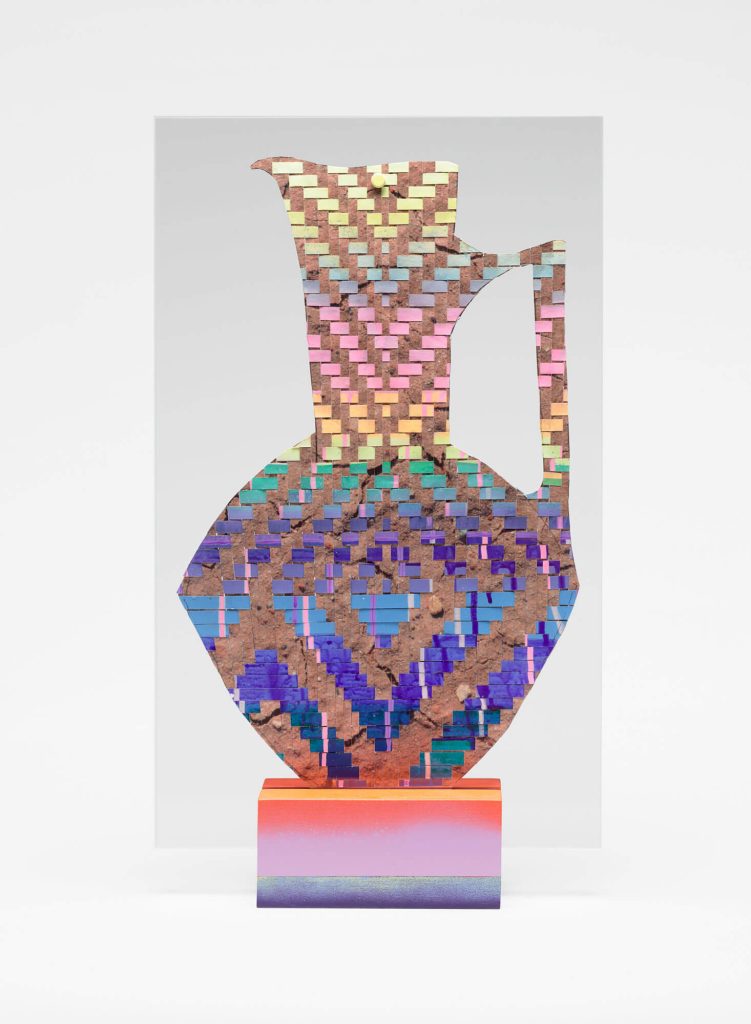
How did the series Canning the Sunset begin? And how did you figure out the process?
The series began during the pandemic. There’s a field that I pass on the drive to my studio. It has a pull-off with a really great sunset view. During the spring of 2020, I started “attending” the sunset as an event. My photos from this ritual witnessing became the source of the project.
I’ve always been interested in souvenirs as objects that preserve a memory of place and time. And I’m inspired by the self-sufficiency of the Shaker community. For me, “preserving” the sunset in recycled glass jars connects to canning and “putting up” rations for times of scarcity. This felt especially top of mind amid the uncertainties of the pandemic. To make the work, I taught myself how to color sand and created a palette of colors based on the images—a very painterly process. With some DIY experiments, I learned how to best layer the sand in the jars to build up the appearance of a sunset sky.
Do you envision an end to the series?
Not so much an end as an evolution. I like continuing the series based on specific places or regions. I recently did a commissioned piece where the collector supplied a series of sunset images from his home. As someone who likes to work on several bodies of work at once, I’ll likely keep going.
Your work often involves repetitive tasks and mark-making. What draws you to these labor-intensive methods of creating?
For me, the process is one of the foundations of my work. I find it transportive. I’m most present when my hands are busy. Sometimes the process creates a good rule base for me to push up against, to move in and out of. Connecting natural events to methods like weaving, canning, and flower pressing, I’m exploring how we preserve memories and connect to the environment, speaking through the resourcefulness and tenderness involved in making by hand.
The elements of time and place are embedded in Canning the Sunset, your pressed flower series, the rag rug drawings, and others. Can you speak about these concepts concerning your work?
Growing up in southern Maine and seacoast New Hampshire, there’s an awareness of time and tides, tourist season, growing season… The rhythm of life matters in my work, sometimes in the subject itself, and sometimes in the process. For example, the pressed-flower paintings memorialize blooms as a keepsake, a reminder of a moment. The rag rug drawings are created as a result of repetitive mark-making. They have their own beat and are made, improv, as I go. The rhythm reveals the work.
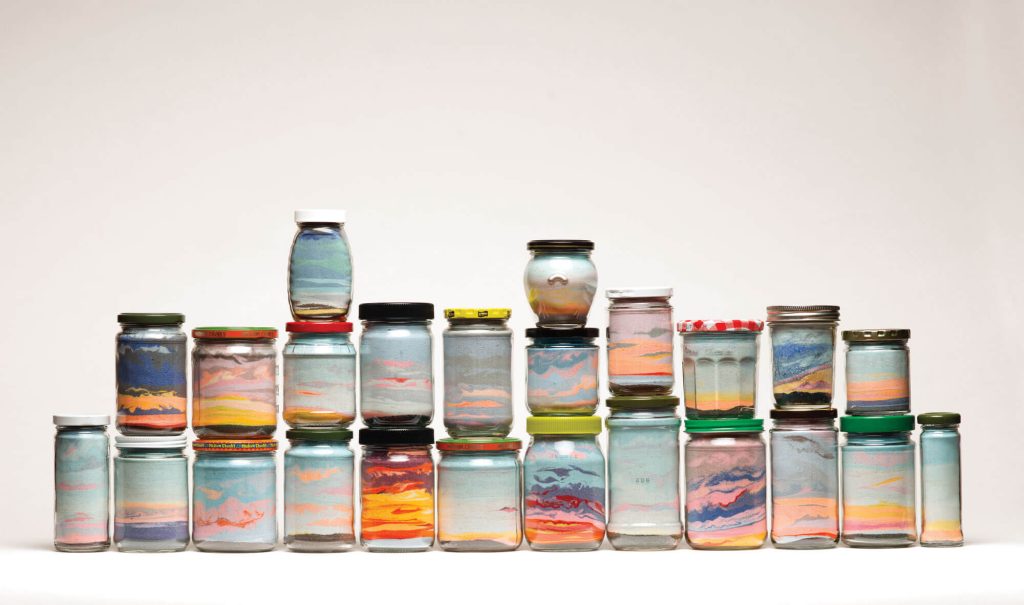
You’ve mentioned that you work on several projects at once. What’s a typical day like in the studio?
Because I work repetitively, I prefer to have many projects underway in different states of completion. Working on a drawing while waiting for the paint to dry on another project keeps a steady flow and interest. While it’s vital to bring project ideas with me into the studio, it’s equally important to pay attention to opportunities that come from the making itself—the surrendering to the process part. Those two things act in parallel for me. So I wouldn’t say my day is scripted at all, except knowing that I’m leaving something in a state I can get back into to start my day.
What’s next for you? Are there any upcoming shows or projects on the horizon?
I’m beginning a large new pressed-flower piece to be shown at MASS MoCA. The finished work, Almanac, will comprise hundreds of paintings of individual pressed flowers installed according to their bloom times. And I have an ongoing project, Wild Knoll Foundation Garden, in York, Maine, unlike anything I’ve undertaken before. It’s an environmental and historically engaged work that honors writer and avid gardener May Sarton at the foundation site of her former home, “Wild Knoll.” The garden beds are laid out as “rooms,” each planted in a different color, according to the house’s footprint. The project is a conversation, a meditation on the human connection to nature, and a commentary on time, care, and persistence.
Carly Glovinski received her BFA from Boston University and is represented by Morgan Lehman Gallery in New York. She has been awarded residencies at the Surf Point Foundation and Canterbury Shaker Village. Her work has been in major publications such as New American Paintings, ArtMaze Magazine, Hyperallergic, and Vice. It is in numerous public and private collections, including the Colby College Museum of Art, Farnsworth Art Museum, Fidelity Investments, and the Cleveland Clinic.
